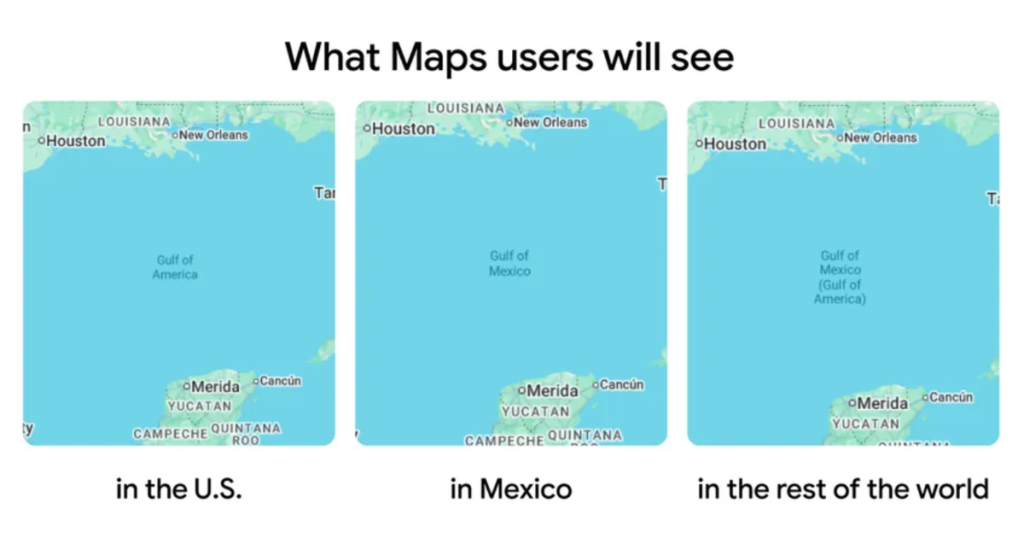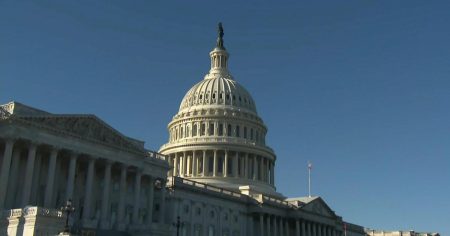The Gulf of Mexico Renamed to the Gulf of America
Starting from Monday, Google Maps users in the United States will notice a significant change when they look at the body of water that has long been known as the Gulf of Mexico. The new name, "Gulf of America," reflects the terms of President Trump’s controversial executive order titled "Restoring Names That Honor American Greatness," which he signed on his first day in office. This executive order aims to rename several geographical landmarks to align with what is perceived as a more American-centric naming convention. The updated name is now reflected in the Geographic Names Information System (GNIS), a comprehensive government database managed by the Interior Department. The GNIS entry for the Gulf reads: "The Gulf of America, formerly known as the Gulf of Mexico, with an average depth of 5,300 feet, is a major body of water bordered and nearly landlocked by North America, with the Gulf’s eastern, northern, and northwestern shores in the U.S. and its southwestern and southern shores in Mexico." This change emphasizes the U.S. perspective on the shared body of water, despite the near-equal shoreline it shares with Mexico.
Global Impact and Regional Differences
The renaming of the Gulf of Mexico to the Gulf of America is a significant shift that will affect how the body of water is perceived and referred to, particularly within the United States. However, the impact is not uniform across all regions. Google Maps users within the U.S. will see the new name, "Gulf of America," when they access the application. In contrast, users in Mexico will continue to see the basin referred to by its historical name, "Gulf of Mexico." For users accessing Google Maps from anywhere else in the world, both names will be displayed, reflecting a more balanced and inclusive approach. Google’s decision to implement these regional differences is based on the location settings of the user’s device, whether it’s determined by the SIM card, network, or locale settings on mobile phones, or the region selected in the Search settings when using the web version of Google Maps.
Compliance with Federal Directives
Google previously indicated that it would adhere to the changes mandated by President Trump’s executive order, but the company’s actions would be guided by the official decisions of the Board on Geographic Names, the federal body responsible for standardizing nomenclature across U.S. territory. The Board’s role in this process is crucial, as it ensures that any changes to geographical names are based on a standardized and authoritative source. By following the updated entry in the GNIS, Google is demonstrating its commitment to compliance with federal directives while also maintaining a degree of flexibility to cater to different regional perspectives. This approach aims to balance the legal requirements with the practical considerations of user experience and international norms.
Historical and Cultural Significance
The Gulf of Mexico, now renamed the Gulf of America, has a rich history and cultural significance that extends beyond national boundaries. Shared nearly equally by the United States and Mexico, it has been a focal point for economic activities, environmental conservation, and cultural exchange for centuries. The traditional name, "Gulf of Mexico," has been deeply embedded in the region’s identity, reflecting the historical and geographical connection to Mexico. This renaming, while aligning with a new American-centric perspective, may also lead to confusion and resistance among communities that have long recognized the Gulf by its original name. The change could impact how the Gulf is discussed in scientific, educational, and media contexts, where historical accuracy and consistency are paramount.
Other Geographical Renaming Initiatives
President Trump’s executive order also includes other significant geographical renaming initiatives. One notable example is the restoration of the name "Mount McKinley" for the highest peak in North America, which had been officially renamed "Denali" in 2015 to honor the traditional Alaskan Native name. The mountain, located in Alaska, has a complex history of naming and renaming, reflecting the tensions between indigenous traditions and federal decisions. As of Tuesday, however, the name "Denali" had not yet been updated in the GNIS or in Google Maps, indicating a potential delay in the implementation of the executive order for certain landmarks. This inconsistency highlights the challenges and complexities involved in renaming well-known geographical features and the varying speeds at which different institutions and platforms may adopt these changes.
Media and Public Reaction
The renaming of the Gulf of Mexico to the Gulf of America has sparked a range of reactions from the media and the public. While some view it as a positive step towards national pride and honoring American heritage, others see it as an unnecessary and potentially divisive move. Critics argue that the change undermines the historical and cultural significance of the Gulf’s original name and could lead to confusion, especially in international contexts. Media outlets like CBS News have covered the story extensively, highlighting the implications of the name change and the technical and social challenges it presents. As the dust settles, it remains to be seen how widely the new name will be adopted and whether it will gain acceptance among the broader public and international community.












